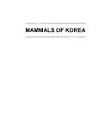Ethnobotany of Bhil Tribe
janv. 2011 · Scientific Publishers
Ebook
322
Pages
reportLes notes et les avis ne sont pas vérifiés En savoir plus
À propos de cet ebook
The present ethnobotanical work was carried out by doing periodical and extensive ethnobotanical survey, assessment of field and tribal knowledge bank of tribal inhabited localities of Ratlam district of Western Madhya Pradesh from 2004-2007. A total number of 210 plant species of ethnobotanical importance [Medicinal- 186; Vegetables- 27; Wild edible fruits-36; Fodder/Forage - 18; Beverage and Drinks-3; Gum and Resin-3; Magico-religious beliefs and offerings-25; Agriculture implements, Handle, Tools, Boats-5; Fibres-11; Detergent - 3; Dye-3; Tannin-12; Oil yielding Plants-3; House, Building construction, Thatching and Furniture-11; Taboos and Totems-6; Musical instruments-11; Fuel-6; Biofencing-10; Fish poison-10; Other economic uses-7] belonging to 178 genera and 71 families have been including in the present study used by the indigenous people inhabiting all the villages of the district. Further the dicots are represented by 180 species belonging to 150 genera and 59 families and the remaining 30 species; belong to 28 genera and 12 families of monocots. Statistically, out of 210 plant species of ethnobotanical interest are belonging to different habits viz, 96 herbs, 55 trees, 37 shrubs, 16 climbers, 5 grasses and one angiospermic parasite plants and were included in the present study. The book includes vernacular names, Taxonomic description, distribution, part use, Chemical constituents, Biological activities, Folk uses of studied plants. This book is helpful for Botanists, Ethnobotanists, NGO’s and research workers interested in carrying out the researchers in the field of Ayurveda and Medicinal uses of the plants, BAMS students, the student of Botany and the persons engaged in Pharmaceutical concerns as well as other reader’s interested in the field of Herbal-medicine and Ethno-medicine and a must for Scientific and University Libraries in Madhya Pradesh.
Quelques mots sur l'auteur
Singh, V.P.
V.P. Singh is Retd Professor & Head, Department of Plant Sciences (IEMPS), Vikram University, Ujjain (M.P.). He obtained his M.Sc. (1966) and Ph.D. (1971) from Vikram University, Ujjain (M.P.), specializing in Forest ecology, Mangrove ecology, Metal toxicity. He has had a brilliant academic carrier followed by over 36 years of teaching and conducting research in Botany at postgraduate as well as research levels. Dr. Singh has guided 25 Ph.D. students and Published 125 research Papers in National and International periodicals. He is also an author of 11 books in his own specialized fields. He has attended and participated in many seminars, workshops and conferences. Presently he is engaged in the work on the Medicinal Flora of Western Madhya PradeshJadhav, D.
Dinesh Jadhav, (b. 1975). He obtained his M. Sc. (1999) and Ph.D. (2008) from Vikram University, Ujjain (M.P.). Published 35 research Papers in National and International periodicals. He is also an author of 4 books viz. Medicinal plants of India : A Guide to Ayurvedic & Ethnomedicinal uses of Plants (Vol. I); Medicinal plants of India : A Guide to Ayurvedic & Ethnomedicinal uses of Plants (Vol. II); Medicinal plants of India : A Guide to Ayurvedic & Ethnomedicinal uses of Plants (Vol. III) and Medicinal Plants of Madhya Pradesh & Chhattisgarh. He has attended and participated in many seminars, workshops and conferences. Presently he is engaged in the work on the Medicinal flora of Madhya Pradesh and Chhattisgarh.
Attribuez une note à ce ebook
Faites-nous part de votre avis.
Informations sur la lecture
Téléphones intelligents et tablettes
Installez l'appli Google Play Livres pour Android et iPad ou iPhone. Elle se synchronise automatiquement avec votre compte et vous permet de lire des livres en ligne ou hors connexion, où que vous soyez.
Ordinateurs portables et de bureau
Vous pouvez écouter les livres audio achetés sur Google Play en utilisant le navigateur Web de votre ordinateur.
Liseuses et autres appareils
Pour pouvoir lire des ouvrages sur des appareils utilisant la technologie e-Ink, comme les liseuses électroniques Kobo, vous devez télécharger un fichier et le transférer sur l'appareil en question. Suivez les instructions détaillées du centre d'aide pour transférer les fichiers sur les liseuses électroniques compatibles.





